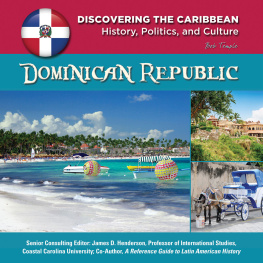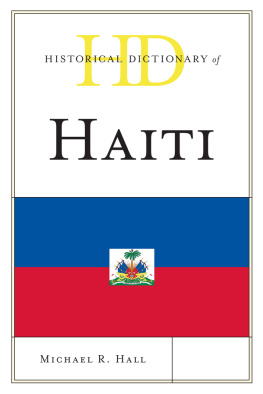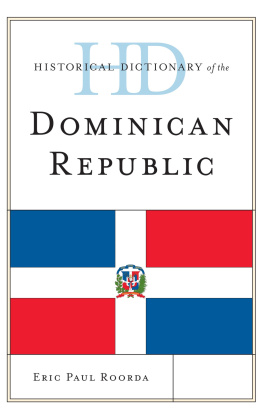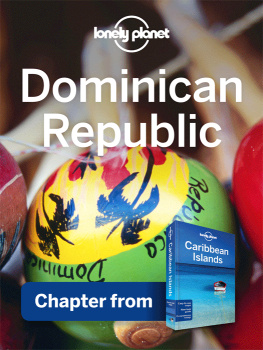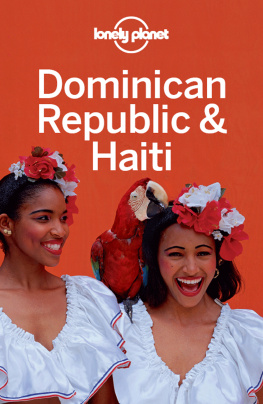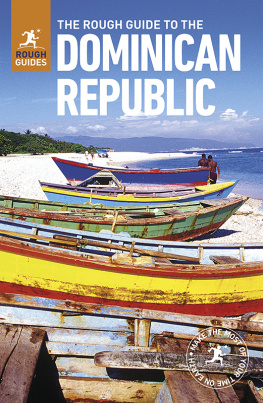FROM SUGAR TO REVOLUTION

FROM SUGAR TO REVOLUTION
Womens Visions of Haiti, Cuba, and
the Dominican Republic
MYRIAM J. A. CHANCY

Wilfrid Laurier University Press acknowledges the financial support of the Government of Canada through the Canada Book Fund for our publishing activities.
Library and Archives Canada Cataloguing in Publication
Chancy, Myriam J. A. (Myriam Josphe Aime), 1970
From sugar to revolution : womens visions of Haiti, Cuba, and the Dominican Republic / Myriam J.A. Chancy.
Includes bibliographical references and index.
Issued also in electronic format.
ISBN 978-1-55458-428-4
1. Cuban literatureWomen authorsHistory and criticism. 2. Dominican literatureWomen authorsHistory and criticism. 3. Haitian literatureWomen authorsHistory and criticism. 4. Women and literatureCaribbean Area. 5. Women artistsCaribbean Area. I. Title.
PN849.C3C54 2012 809.8928709729 C2011-905968-1
Includes bibliographical references and index.
Issued also in print format.
ISBN 978-1-55458-429-1 (PDF)
1. Cuban literatureWomen authorsHistory and criticism. 2. Dominican literatureWomen authorsHistory and criticism. 3. Haitian literatureWomen authorsHistory and criticism. 4. Women and literatureCaribbean Area. 5. Women artistsCaribbean Area. I. Title.
PN849.C3C54 2012a 809.8928709729 C2011-905969-X
Cover and page ii photo : Rve Indigo: Port-au-Prince Cathedral Market, 1999, 2010 by Myriam J. A. Chancy. Cover design by Sandra Friesen. Text design by Catharine Bonas-Taylor.
2012 Wilfrid Laurier University Press
Waterloo, Ontario, Canada
www.wlupress.wlu.ca
This book is printed on FSC recycled paper and is certified Ecologo. It is made from 100% post-consumer fibre, processed chlorine free, and manufactured using biogas energy.
Printed in Canada
Every reasonable effort has been made to acquire permission for copyright material used in this text, and to acknowledge all such indebtedness accurately. Any errors and omissions called to the publishers attention will be corrected in future printings.
No part of this publication may be reproduced, stored in a retrieval system or trans mitted, in any form or by any means, without the prior written consent of the publisher or a licence from The Canadian Copyright Licensing Agency (Access Copyright). For an Access Copyright licence, visit www.accesscopyright.ca or call toll free to 1-800-893-5777.
This work is dedicated to the resounding silence of my Dominican antecedents and the cacophonous clamour of my Haitian ancestors.
PREFACE
The Stories We Cannot Tell
The Incommensurability of Shared Histories
The genesis of this study took place in a moment of reflection when, putting down one historically based novel (The Farming of Bones by Edwidge Danticat) and picking up another (In the Time of the Butterflies by Julia Alvarez), I realized that a method of recomposition I had utilized to make sense of Caribbean womens lives, their effaced and erased histories, could no longer hold.is not to say that fiction should serve as a stand-in for historical archives, but that such lacunae are striking, given the fact that the Caribbean novel has traditionally served the purpose of filling in the gaps of official history. Thus, even though Danticats and Alvarezs novels follow a long-established trajectory of Caribbean literature used by writers of the region to compensate for the excision of historical records and memories of the areas vast population by writing fiction, poetry, and theatrethe novel being the chief medium that authors have used to build an archive giving testament to the regions varied historyI was left to wonder to what extent fiction today can fulfill such a need.
There are two problems here: on the one hand, it may be that we are still too close to the historical incidents under discussion to do them justice, since the events of these time periods are still being sifted through by trained historians, and on the other, the genre of fiction remains in the arena of the imagination and, as such, cannot purport to fully disclose the facts of history. Fiction and other literary forms born of the imagination may put life into the proceedings of history, and though we now accept that the process is one that bears its own features of facticity, and that history, as we once understood it, is under revision, the author still has the liberty to mould their story to their intended effect. Between fact, fiction, and readers expectations (especially in the case of readers of Caribbean fiction, who are used to finding in it traces of historical moments not revealed in official versions of history), then, there are fissures aplenty. Still, given the fact that the Caribbean as a whole experiences entrenched struggles over sovereignty, human rights, and neocolonialism through NorthSouth trade and cultural exchanges, it stands to reason that writers emanating from the region would respond to the need to historicize their creative works. We might consider, then, that todays Caribbean writers, like their eighteenth-century counterparts, are engaged in a discourse concerning national and regional identity whether they are conscious of it or not. Like those authors who followed the Napoleonic wars, they are awake to the fact that in this mass experience of history, the national element is linked on the one hand with the problems of social transformation; and on the other, more and more people become aware of the connection between national and world history (Lukcs 342). For the writers who concern me in this study, the question is not so much about the connection between national and world history (though such considerations may come into play on a more philosophical level, these are beyond the scope of this book), as it is about the connection between national, regional, and transnational history, given that many of the textual archives about the Caribbean are currently being produced outside of that region. The cultural production of Caribbean authors, whether inside or outside of the region, is such that it bears a responsibility to its multiple audiences: one debt to history and another to memory.
In assessing the rise and importance of the (European) historical novel, Georg Lukcs argues that the significance of early- to mid-twentieth-century historical novels rests [o]n the fact that their authors have tried to show artistically the concrete historical genesis of their time (342; emphasis mine). The artistic (and for Lukcs, who was a Marxist, the political) merit of the work also comes from there being no substitute for a concrete relationship to the present or, what comes to the same thing, a concrete familiarity with popular life (339). Lukcs, of course, wrote at a time when debates about postmodernity, historiography, and post-coloniality were not yet being addressed, and so his discussion stops short of informing us of the shifts that occur in the genre by writers emanating from the Global South. Still, I would argue that historical Caribbean novels have a common goal with the texts of the traditions preceding them in the European context: the desire to ground their texts in the historical moment to which their present is tied, while also giving voice to the popular within those nation-states they seek to illustrate (or question) in their works.
Next page

